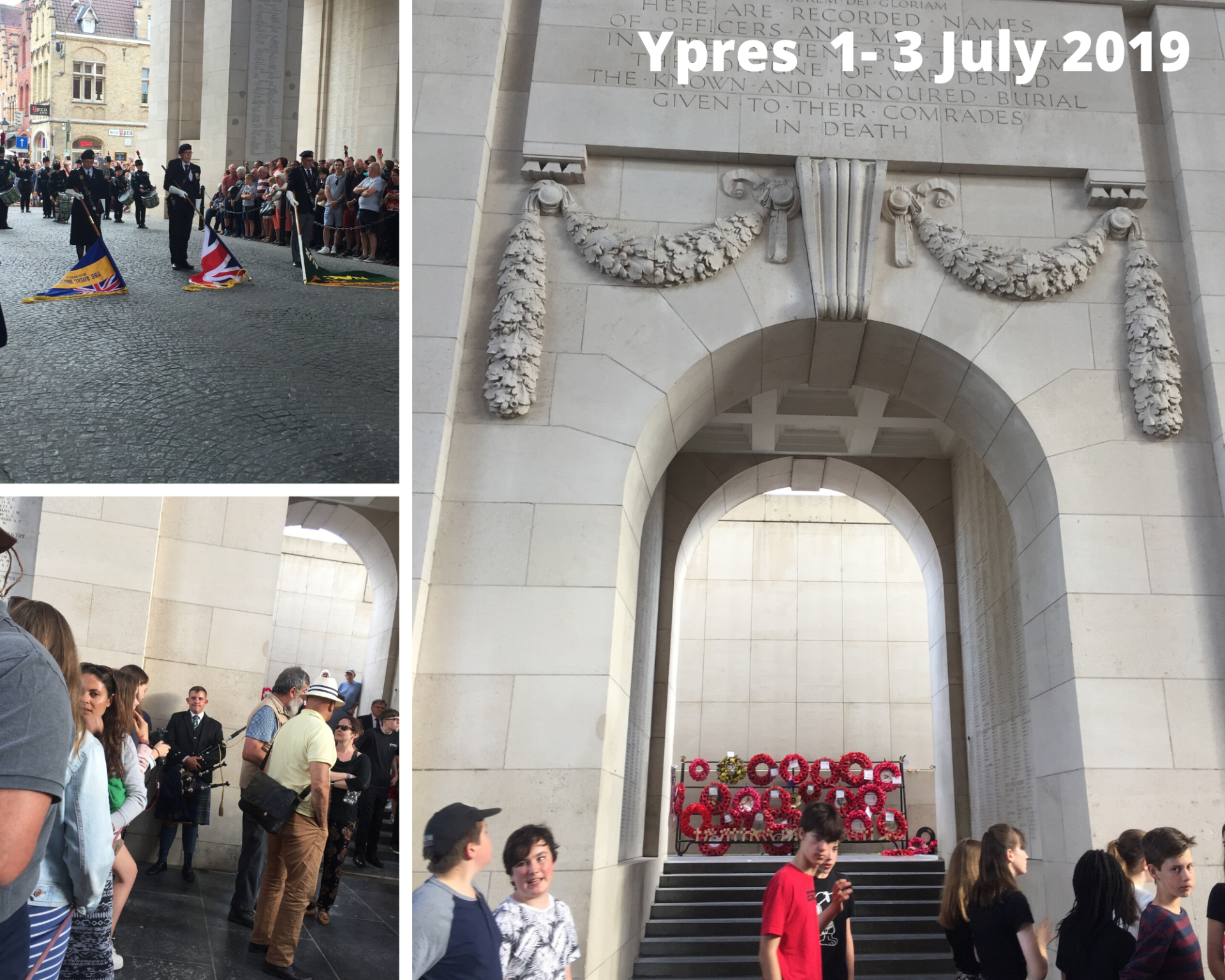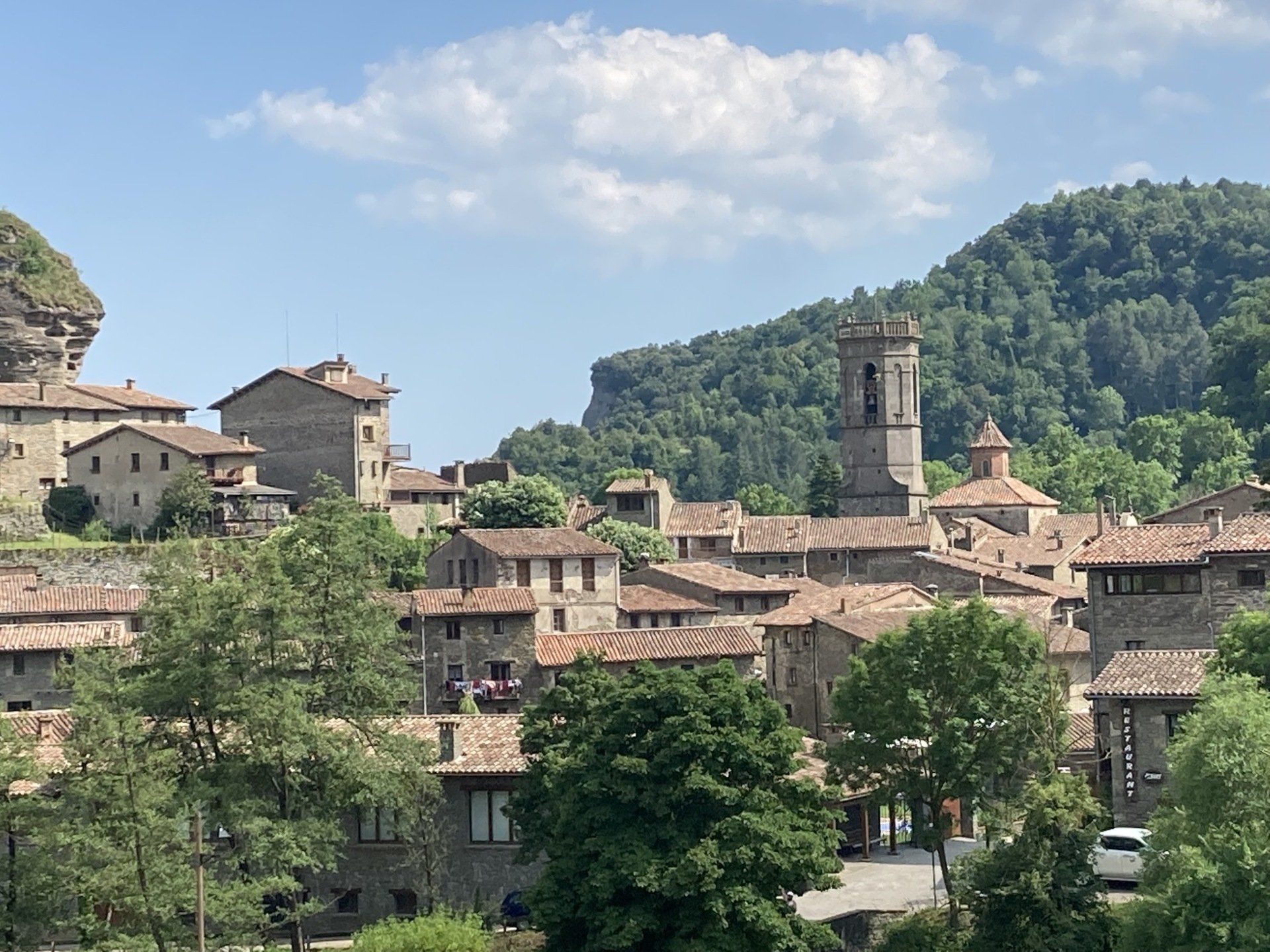
En route, road signs reminded us that our destination’s official name is the Dutch language “Ieper”, whilst the French “Ypres” is more commonly known; however we discovered whilst there, it was also known as “Wipers” by the British troops stationed there in the “Great War”, but more about that later. Fortifications around the town existed for over a thousand year, with successive occupiers and conquerors providing additional ramparts and moats to protect its strategic position. For a large part of World War 1, Ypres was surrounded by German forces on three sides, from where it was heavily bombarded resulting in extensive destruction. Camping Jeugdstadion The municipality run Camping Jeugdstadion is perfectly situated to enjoy Ypres and the surrounding area. On foot it’s only 5 minutes to the city walls, 15 mins to both the Menin Gate, and the Grote Markt, the central square with its famous Cloth Hall. The site is well equipped with two amenity blocks, recycling and electricity and water points, a field for camping, cabins for rent and a hardened grass area for campervans and caravans. We used one of the additional concrete plots for campers and mobile homes, where their website states that awnings aren’t allowed, however the super friendly staff were very chilled about us putting ours out onto the adjacent grass area. It is possible to hire bikes from the site, and whilst slightly better rates may have been available elsewhere in the city, the convenience was hard to beat. Menin Gate and last post ceremony Between 1914 and 1918, hundreds of thousands of men marched through the Menin Gate on their way to the battlefields. The location was therefore chosen as one of the four sites to commemorate members of the Commonwealth forces with no known grave. The grand arch of the gate and its surrounding structure are covered in stone slabs, into which are carved the names of over 54,000 men. Shortly after the memorial was inaugurated in 1928, the buglers of the local Fire Brigade played the Last Post as an expression of gratitude by Belgian nation towards those who had died. The tradition continues to this day, and can be seen every evening at 8pm. People start to gather from 7pm, and traffic is stopped around 30 minutes later, so I’d recommend getting there early enough to gather within the arches of the gate itself to fully appreciate this moving and atmospheric event. The night we were there included wreath laying by UK veterans and schoolkids, and bagpipe music from a very nervous teenage piper who we found ourselves offering words of calm and reassurance to whilst waiting for the ceremony to start. He didn’t have to worry as he was fantastic. Grote Markt The central square known as the Grote Markt is surrounded by shops, restaurants and the Cloth Hall, which is also home to the In Flanders Fields museum. The museum provides displays explaining how the battles unfolded around the city, how soldiers lived in the trenches, and capturing the scale and senselessness of the loss of life. Although a difficult subject matter, this museum is a must during any visit to Ypres.

Situated about 40km northwest of the city of Girona, the Collsacabra Protected Natural Area is dominated by steep crags, which along with two major reservoirs, are major attractions for lovers of the outdoors. As well as being one of the points of entry to the area, the village of Rupit has enough charm to deserve a visit even if you haven’t brought your mountain bike or walking boots. And so it was, that one Friday morning we packed up Obi for the weekend and headed for the hills. The route we took to the hills from the Costa Brava went via the village of Les Planes d'Hostoles, as the plan was to take a quick dip in one of the pools of the Riera de Cogolls, however after parking up, we saw signs advising that due to Covid, a booking was required to control the number of people at the sites at any one time. Although we didn’t think it too busy, instead of a dip we opted for a short walk nearby on the path which makes up the Catalan section of el Camino Santiago, before continuing our journey. The road into Valle d’en Bas carves through the Serrat de la Calcina mountains in a tunnel from which you emerge into a broad lush valley surrounded by imposing mountains, in contrast to the narrow valley you’ve been driving through for the previous 20 minutes. Shortly afterwards we stopped in Hostelets d’en Bas for lunch, a village that has origins going back to the 18th century with the establishment of a hostel on the Royal road between Olot and Vic. In narrow calle Teixeda, you’ll find houses with beautiful wooden balconies festooned with flowers. This street also has a number of restaurants, including the Ca L’Esteve where we enjoyed an excellent menu del dia before the heavens opened, and the friendly staff had to lend us an umbrella to make it back to where the van was parked. What seemed like a slow 30 minute drive up the mountain towards Rupit in heavy rain brought us to Camping Rupit, where we decided to sit out the showers in the bar and consider setting up camp later. The site is small, consisting of a field for tents and campers on one side of the central amenities block, with bungalows and fixed tents on the other. There is a bar/ restaurant and small shop, and on that Friday evening, we practically had the place to ourselves. Eventually the rain stopped, and we set up camp and admired the views of the surrounding hills.

Having lost the opportunity to explore the Picos de Europa in 2020 due to an issue with the van seeing it sent homeward on the back of a lorry, we’ve been keen to get back and see what we’ve missed. Top of the list was the 10km path above the Cares river between Poncebos and Cain, through a gorge known as Garganta del Cares, which separates the western and cental massifs of the mountain range. History The path was originally cut into the rock to support the creation of a hydroelectric project over 100 years ago; with the canal from Cain visible along many sections of the route, before the water descends to drive the turbines of the plant at Camarmeña near where we started. Logistics We were based in Potes, which meant an hour and 10 minute drive around to the start point of the walk at Poncebos. Although the roads were quiet early in the morning, the first 25km down to Panes is very narrow and winding and whilst beautiful, is a journey you don’t want to have to make in the van if it isn’t necessary. In hindsight, we would have been better off basing ourselves in Las Arenas ahead of the walk, where there is a campsite (check) and an attractive town with bars and restaurants to explore. Another option is a free area de autocaravanna on the N621 outside Panes, but this still means a km trip to the start. Either of these would have facilitated an earlier start to the trip, which is important, because parking was a nightmare out towards Poncebos. There is parking at the funicular which goes up to Bulnes (check) but it was already full by the time we arrived (0900) with vehicle being turned around and sent back towards a car park a few kms back towards Poncebos. We managed to get the van up off the road before the car park as we were keen to avoid any unnecessary steps before we got properly stuck into the hike. The walk reportedly attracts 300,000 walkers a year, many of whom are concentrated in the summer months. Whilst this would normally put us off, I have to say it didn’t bother us too much on the day.

Synonymous with the production and export of Port, the cities possess numerous historic sites, an abundance of interesting transport options, and plenty of places to eat and drink. Based on five nights in August 2020, here are our top tips to enjoy a stay in these beautiful cities. 1 Ditch the van Controversial I know for a blog on a campervan site, but the streets of Porto and Gaia Nova are unforgiving to larger vehicles and are best explored on foot. We found ample secure parking for only €6 per day at Estacion General Torres on the Gaia Nova side, only a 10-minute walk from the river. 2 Take the tram to Foz Porto has maintained three historic trams, with wooden interiors, brass fittings and ropes trailing through the interior to ring a large bell when requesting a stop. One of the routes, known as Linha 1, departs from Infante runs along the banks of the Douro River to the Passeio Alegre Park in the Foz. Take the time to watch the driver change the direction of the tram at the end of the route by swapping their seat from one end to the other, flipping the passenger seats, and swinging the electrical pickup arm, or pantograph, from front to back.


